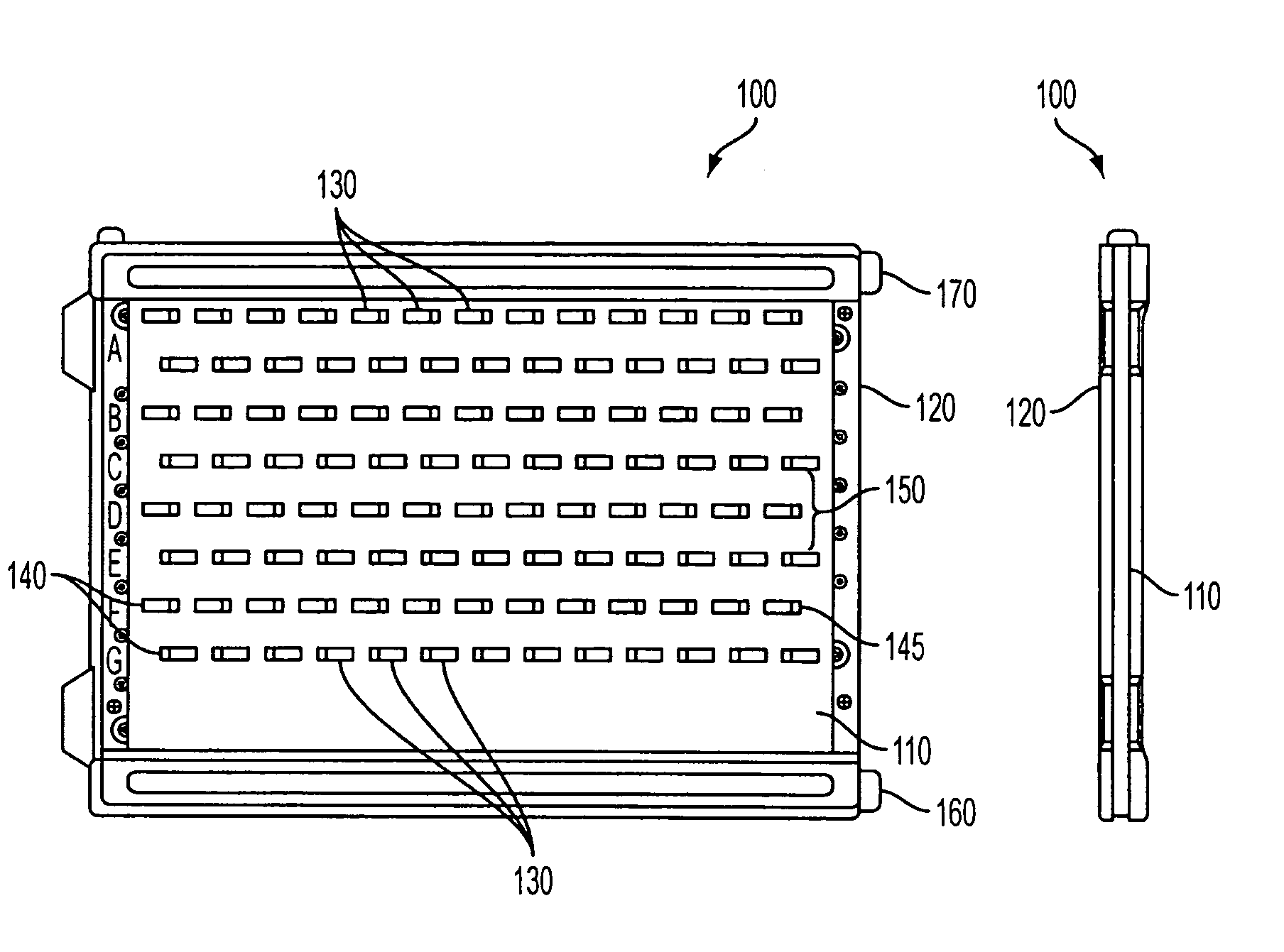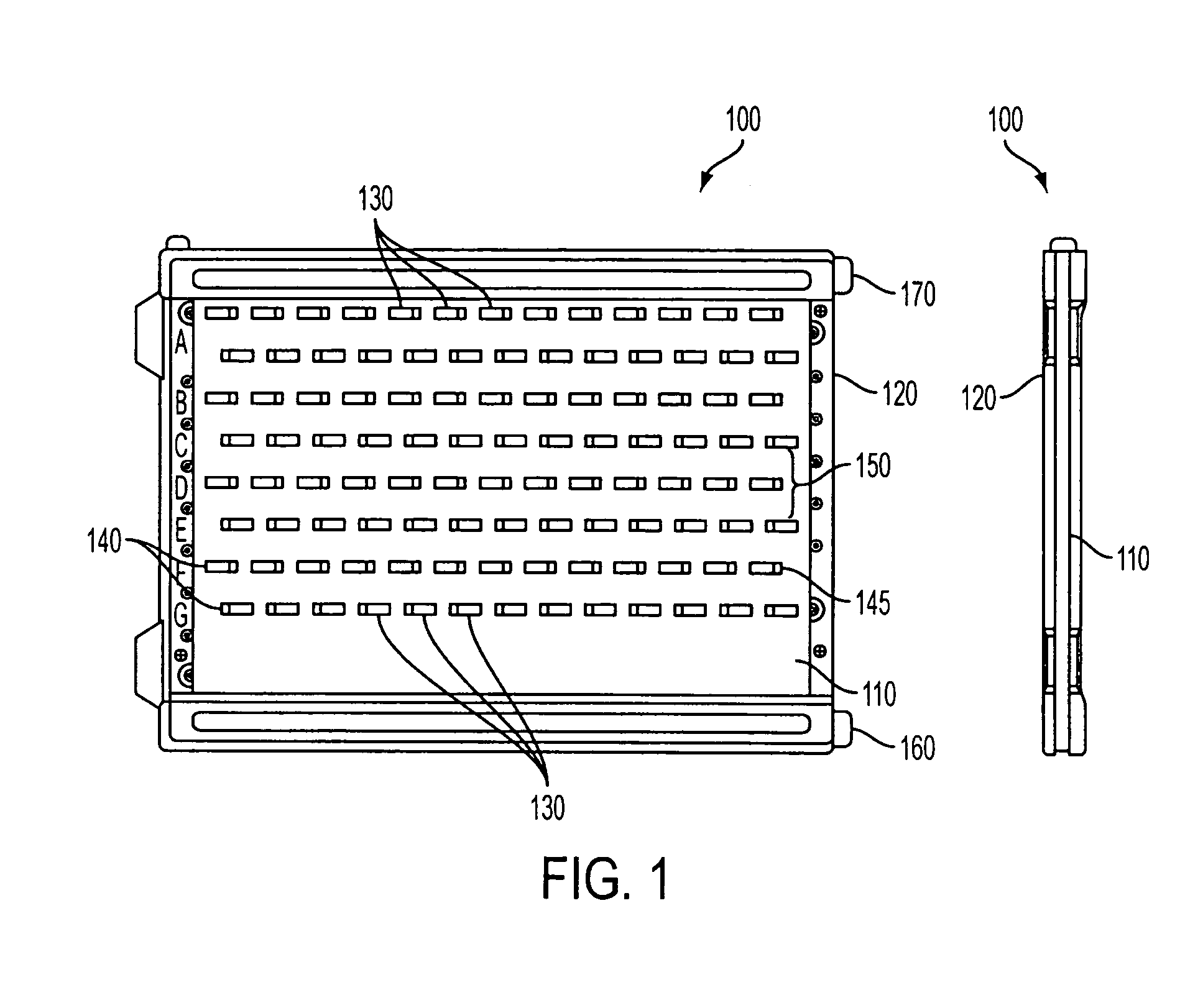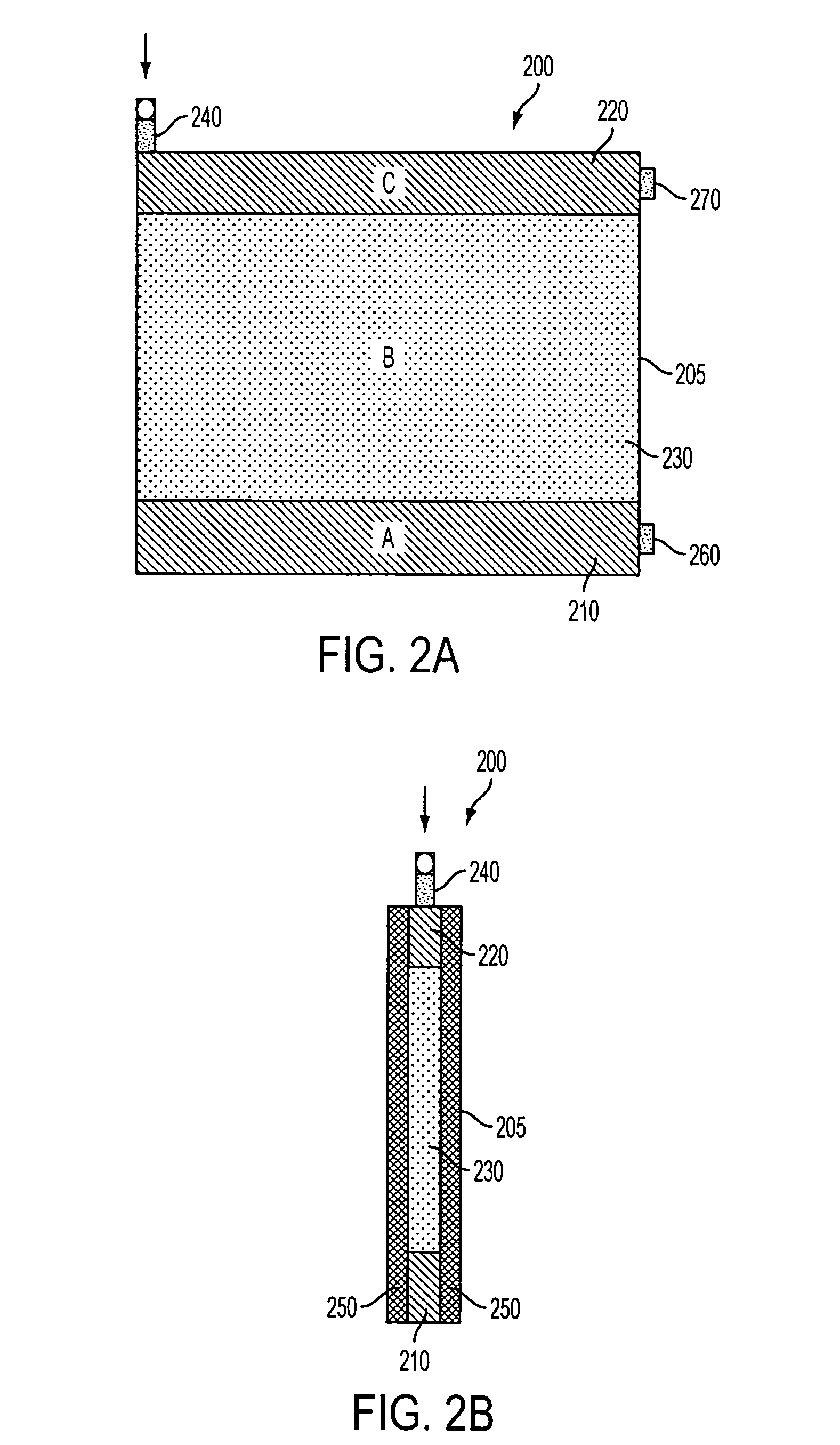Composite compositions for electrophoresis
a technology of compositions and electrophoresis, applied in the field of macromolecules, can solve the problems of inability to reliably perform polymerization reactions, inability to polymerize for hours, and inability to meet the requirements of electrophoresis, and achieve the effect of reducing the effect of secondary and tertiary structure on the electrophoretic mobility of proteins
- Summary
- Abstract
- Description
- Claims
- Application Information
AI Technical Summary
Benefits of technology
Problems solved by technology
Method used
Image
Examples
example 1
Preparation of Gels
[0150] All chemicals used in the Examples were purchased from Sigma-Aldrich (Sigma-Aldrich Co., St. Louis, Mo.) unless indicated otherwise.
[0151] In an exemplary embodiment, gels of the invention were prepared in a “mini-gel” cassette having a staggered well format. See FIG. 1 and U.S. Pat. No. 6,562,213; published U.S. Patent Application 2002 / 0134680 A1; and published PCT applications WO 02 / 18901 and WO 02 / 071024. An exemplary gel of this format is referred to herein as an “E-PAGE™ 96 Gel”, which contains 96 sample lanes and 8 marker lanes and is compatible with standard 96-well plates, including but not limited to 96-well microtiter plates. The well spacing is designed to be compatible with multichannel pipettors and with 8-, 12- or 96-tip robotic loading devices. The protein separation range is from about 10 kilodaltons (kDa) to about 200 kDa in a separation distance of about 16 mm. An exemplary E-PAGE™ 96 Gel assembly (100) is depicted in FIGS. 1 and 10. The...
example 2
E-Page™ Protein Ladders and Loading Buffers
E-PAGE™ MagicMark™ Protein ladder
[0158] A protein standard that is particularly useful for use with the E-PAGE™ 96 Gel was developed from the MagicMark™ and MagicMark™ XP protein ladders (Invitrogen, Carlsbad, Calif.), and named the E-PAGE™ MagicMark™ protein ladder. Like other proteins, the MagicMark™ proteins can be stained with agents such as Coomassie Blue. In addition, however, the recombinant MagicMark™ proteins contain the immunoglobulin binding domain of protein G and can thus be directly bound and detected by most antibodies, irrespective of the antibody's antigenic specificity.
[0159] The original MagicMark™ protein ladder comprises nine proteins of known molecular weight, i.e., 20 kDa, 30 kDa, 40 kDa, 50 kDa, 60 kDa, 80 kDa, 100 kDa, 120 kDa; the MagicMark™ XP standard additionally contains a tenth protein of 220 kDa.
[0160] In contrast, the E-PAGE™ MagicMark™ protein ladder comprises five proteins having molecular weights of ...
example 3
[0185] The gel in FIG. 5 shows the results of electrophoresis of E-PAGE™ MagicMark™ protein ladder (Example 2) in a gel of the invention. Wells in the gel were loaded with 10 ;L of the E-PAGE™ MagicMark™ protein ladder and run at 9 W for 16 min in a staggered 96-well format. Following electrophoresis, the gel was removed from the cassette and stained with Coomassie Blue R-250 (Sigma) at a concentration of 0.02% and initially heated to about 50° C. for about 30 minutes. The stained protein bands were visible to the eye, and the image of the gel in FIG. 5 was obtained using a Hewlett Packard flat bed scanner with a transilluminator attachment. As can be seen, in each “lane” (one of which is boxed in the lower right corner of the gel), the E-PAGE™ MagicMark™ proteins were resolved based on their size (i.e., 220 kDa, 120 kDa, 60 kDa, 40 kDa and 20 kDa). The homogeneity of the electric field across the different lanes and rows is evident from the uniform distribution resu...
PUM
| Property | Measurement | Unit |
|---|---|---|
| Fraction | aaaaa | aaaaa |
| Fraction | aaaaa | aaaaa |
| Fraction | aaaaa | aaaaa |
Abstract
Description
Claims
Application Information
 Login to View More
Login to View More - R&D
- Intellectual Property
- Life Sciences
- Materials
- Tech Scout
- Unparalleled Data Quality
- Higher Quality Content
- 60% Fewer Hallucinations
Browse by: Latest US Patents, China's latest patents, Technical Efficacy Thesaurus, Application Domain, Technology Topic, Popular Technical Reports.
© 2025 PatSnap. All rights reserved.Legal|Privacy policy|Modern Slavery Act Transparency Statement|Sitemap|About US| Contact US: help@patsnap.com



